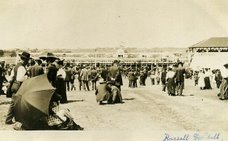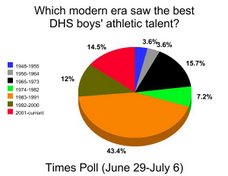Tuesday, September 3, 2013
A Look At Farm Subsidies In Saline County
Harvest is just around the corner, which means area farmers will soon be
reaping what they sowed.
Dorchester, and nearly every other Nebraska community, is extremely dependent on the agricultural economy. When our farmers do well, our businesses tend to do well and our schools tend to do well. Throughout the past four or five years, crop prices have been high, enabling areas like our to endure the national recession without too much pain. The recent years have been very good to our farm community and, in turn, the businesses and lenders that depend on the farm dollar.
Considering all this and our area's economy, should we -- as taxpayers -- be troubled by the large federal subsidies still flowing to ag producers and huge landowners in an era in which few small farmers remain and the largest operations are doubling or tripling their net profits from just a few years ago?
From 1995 to 2012, Nebraska farmers and landowners received $16.4 billion in subsidies. That includes $10.8 billion in commodity subsidies and $3.19 billion in crop insurance subsidies.
Donna's hair salon doesn't get such subsidies, nor does Tyser's Repair or Auto Sales. Neither City Slickers nor Rough Reins gets government payments to help keep the doors open. Nor does any other small business on any main street in America, unless they're selling "green" energy or another government-favored product or service.
Let's look at just one crop: corn. Among Nebraska's 93 counties, No. 1 Custer County in 2012 took in more than $7.7 million in corn subsidies alone -- mostly in the form of direct payments, which go to large landowners, as well as working farmers. (We are told those direct payments will be going away if the U.S. House and Senate finally pass a new farm bill by Sept. 30.)
Now let's look at all crop subsidies just in Saline County. When broken down by zip code, farmers in the Friend area have received more in government payments than those around any other Saline County community. According to USDA data, from 1995-2012, Friend farmers received nearly $49 million in federal subsidies courtesy of you, the taxpayer. (More than a dozen of those Friend-area operations received more than $1 million each, including one that netted around $5.5 million in subsidies.) Dorchester farmers took in $30.9 million over the same time period. Crete farmers received $31.3 million, while Wilber farmers took in $32 million. Tobias and Western farmers netted around $15 million, while Swanton farmers received around $7 million.
Readers can find this information for themselves by visiting this website.
As you consider this, keep in mind that last year, some area farmers sold their corn for more than $8.50 a bushel. Twelve months later, bids at the Dorchester Farmers Cooperative are around $4.50 a bushel for delivery this fall -- nearly a 50% drop in a year.
No doubt about it, farming is risky business. But we still don't know if that justifies $16.4 billion in government support. No matter how much paper rolls off the government printing press, money still doesn't grow on trees.
Subscribe to:
Post Comments (Atom)



















































I think the farmers should pay back all the money on the good years instead of getting more land and new pickups , The poor people in town support the rich.
ReplyDeleteI don't buy your trickle down theory, dorchester times. The farmers I know are buying up more land with those government subsidies. Its time to turn off the spigot and let them buy up more acres with their own dollars, not mine. Also why do farmers pay 70% valuation for property taxes. They are making money off that land - let them pay 100%. Finally when are we going to wise up and charge a fee for all that water they pump out of the ground to grow that $8 corn. All the while they drive their tax free trucks and pay no sales tax for things like seed and chemical. Seems like a raw deal to the rest of us.
ReplyDelete............ you know why rich farmers have a rounded bill on their corn seed cap? ................................... theyre always lookin in the mailbox for their next check ............................................................ youll notice that the bill on my cap is as flat as a cow pie after a week in this late summer heat ............................................. we cow pokes dont get welfare checks ......................................... darn proud of it ......................................................
ReplyDeleteHmmmmm. Tough call.
ReplyDeleteI still remember corn at $2 a bu. and some certain bankers knocking on the doors.
The one big difference between now and the 70s and 80s, besides the commodity prices, is the fact so many young farmers in their 20s and 30s are inheriting land instead of buying it themselves. If you're in an LLC getting direct payments and you're paying your parents below-market prices for your acres, that's a pretty sweet deal.
I have had to work hard all my life and NEVER got a check in my mailbox. Don't act like your better then anyone else just because you get money from the government which by the way is the working man [your welcome]. Some really have it figured out, love how it goes from incorporated
ReplyDeleteto Son&Son to each member of the family but we all know who you are.
Look at Friend's list of subsidy recipients and check out #3 and #23 ---- then look at #163, #173, #188 and #239. All the same immediate family split into entities, including wives who I know have jobs elsewhere and can't be active farmers. I added up the total ---- it's around $3,100,000 in government checks. THat's pretty good work for a showing up at the USDA office.
DeleteThis comment has been removed by a blog administrator.
DeleteI'm OK with the federal government helping out with insurance costs because of the incredible amount of $$$s involved in modern farming. I looked at those lists; 80% of the people listed are not wealthy and they haven't inherited much. In fact, without the government supports I'm not sure they would still be actively farming today. However, outside the crop insurance help, the rest of the farm bill, including the conservation programs and the food stamps, needs to go bye-bye.
ReplyDeleteJealousy doesn't make friends.
ReplyDeleteFarm Subsidies is basically a "Welfare" check. Most farmers work 4 weeks in the Spring, 4 weeks in the Fall, and have 44 weeks off the rest of the year. I know this because I grew up on a farm just outside of Dorchester. I work in town 52 weeks a year with 3 weeks off for vacation, yet I have to pay federal taxes so millionare farmers can receive "welfare". Drive around Dorchester & look at the farms. Life isn't fair but where is the small business owners government assistance? I don't blame the farmers for cashing their "Welfare" checks.....I just want some of that free government money.
ReplyDeleteOur family has never received that much in subsidies that it mentions on the website. The average stated on the website is almost 10 thousand dollars more than what we have ever gotten per year. So who knows how much people really get. That's at least a 170 thousand dollars difference from what is stated and what we actually got..
ReplyDelete